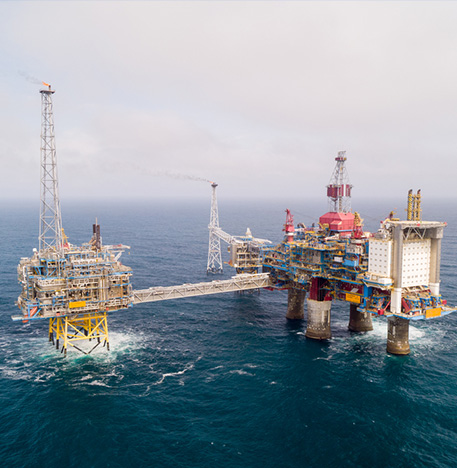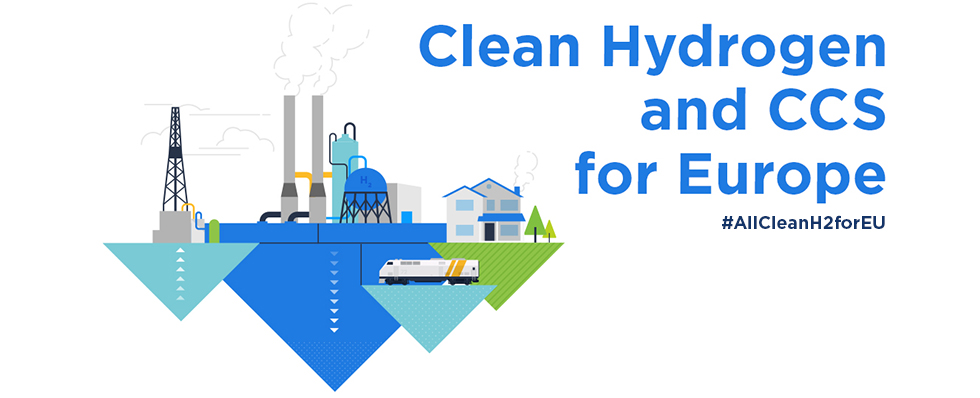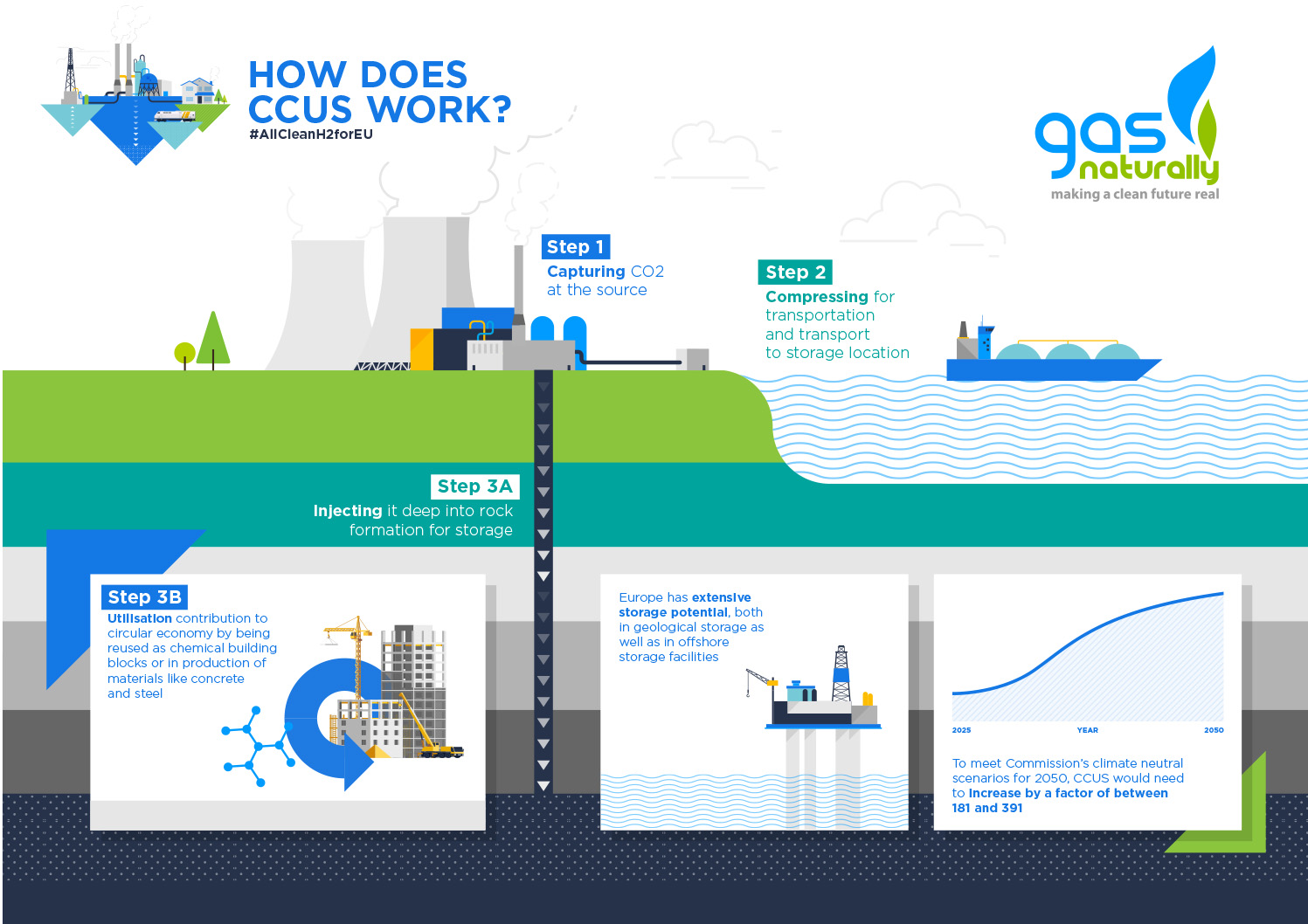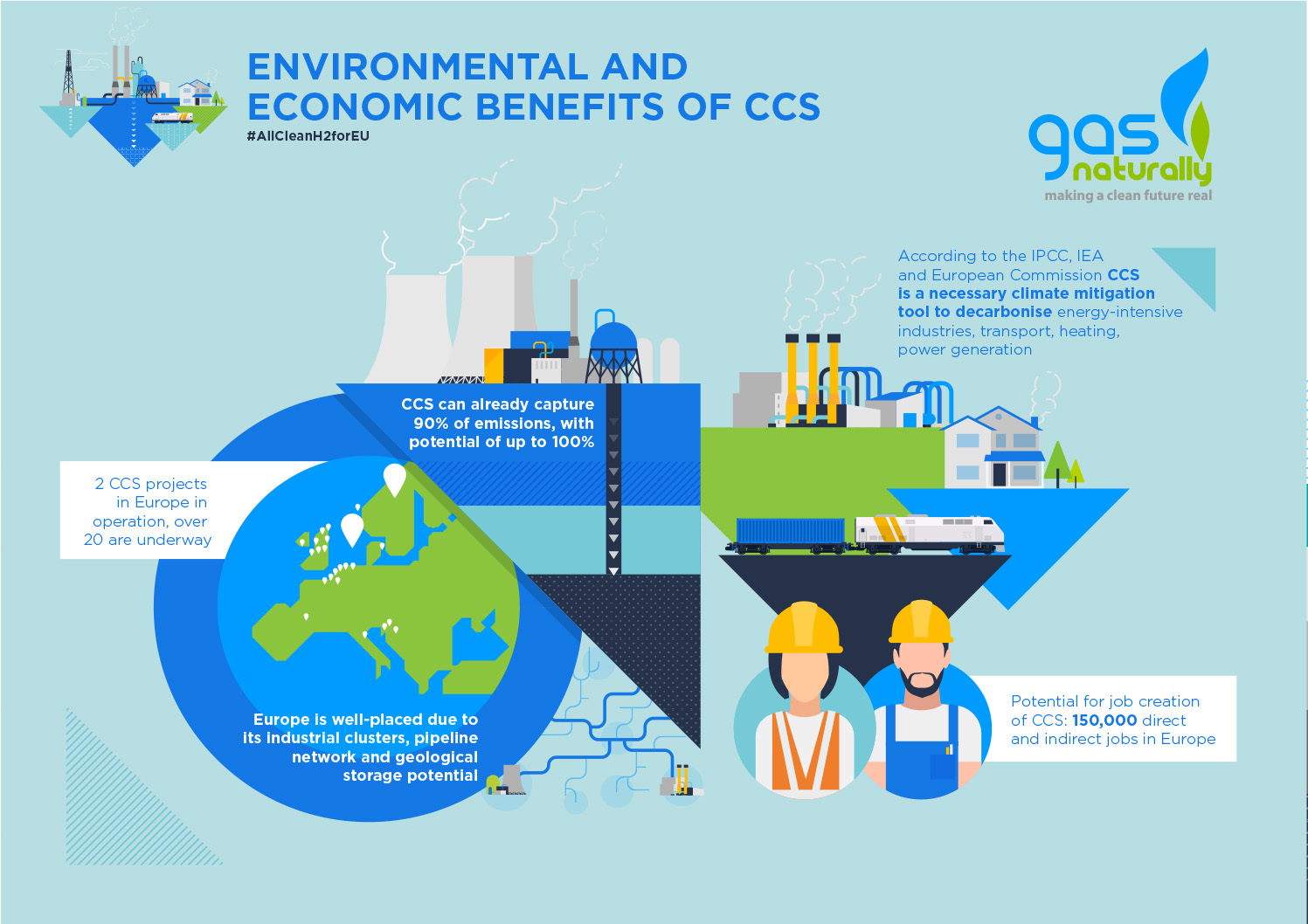THE ROLE OF CCS FOR CLEAN HYDROGEN
The Intergovernmental Panel on Climate Change (IPCC), the International Energy Agency (IEA), the European Commission and many experts agree that carbon capture utilization and storage (CCUS) is a key technology for the decarbonization of Europe, as confirmed by numerous climate models and reports.1
CCS is a proven and readily available climate technology that prevents large quantities of carbon dioxide (CO2) from being released in the atmosphere. It has been in safe, commercial operation for 45 years.
CCS involves three steps: capturing CO2 at the source, compressing it for transportation, and then injecting in deep into a rock formation at a carefully selected and safe site, where it is permanently stored.2
The current suite of CCS projects in development aims to capture emissions from industrial clusters where different industries may share a transport and storage infrastructure, allowing for meaningful cost reductions and for cross-sectorial and cross-border industrial systems to develop.
Reaching climate neutrality by 2050 will require the right regulatory framework for scaling up clean technologies to reach larger and deeper emission cuts. Carbon capture & storage (CCS) and clean hydrogen will play a key role in this process, in particular for hard-to-abate sectors such as heavy-duty transport, energy-intensive industries and heating – but not only. As we firmly believe that Europe’s future energy system needs to take a technology-neutral approach to drive the most cost-efficient and cost-effective decarbonization, we support a strategy which comprises all carbon abatement technologies, including clean hydrogen from renewables, gas pyrolysis or gas reforming combined with CCS.
Today, hydrogen produced from natural gas reforming delivers 70% of industrial hydrogen, while hydrogen from renewables is produced in smaller and more expensive volumes.3 While the costs of renewable hydrogen will decrease with r esearch, development and deployment, and will become competitive with clean hydrogen from natural gas with CCS over time, it will still be crucial to take into careful consideration the availability of renewable electricity for hydrogen production. This is particularly true in the 2030 timeframe and given the envisaged expansion in demand for electricity for overall. Relying solely on electrolysis for clean hydrogen production may divert renewables from the power sector, slowing down its decarbonisation.

Credit: Equinor – Hydrogen plant

Credit: Equinor – Sleipner field
Clean hydrogen from natural gas with carbon management technologies such as CCS and pyrolysis has the potential to develop a commercial market for all forms of clean hydrogen. CCS is a proven technology and commercially available today, with 19 large-scale CCS facilities currently operating globally, 2 of which in Europe and another 20 underway. Geological permanent storage is safe and secure, with over 260Mt of CO2 emissions from human activity already captured and stored.4 Estimates show that there are vast geological storage resources available to meet the highest CCS needs, including in Europe.5 Europe is particularly well-placed to benefit from CCS thanks to industrial clusters, extensive pipeline infrastructure and geological storage potential.
In addition to the environmental benefits of generating negative emissions, CCS can play a crucial role in maintaining the competitiveness and productivity of EU industry: there is potential for 150,000 direct and indirect jobs linked to CO2 capture, transport and storage in Europe in 2050, while the hydrogen economy could provide up to 5.4 million jobs by 2050, and retain existing high-skilled jobs in energy-intensive industries.
SOME EXAMPLES OF CCS PROJECTS
• IOGP CCS maps
• Northern Lights
Equinor, Shell and Total are developing a CO2 cross-border transport connection project where CO2 captured from industrial sites in Europe will be collected by ship and transported to the Norwegian Continental Shelf for permanent storage subsea, resulting in a full-scale European CCS value chain.
• Ravenna Hub CCS project
The Ravenna CCS project aims at developing a large scale project in the industrial hub of RAVENNA. The district’s features in terms of size and the possibility to leverage existing infrastructure make an excellent case for developing a large integrated project. In the Ravenna Hub it will be possible to capture the CO2 from industrial sites, electricity generation from gas and hydrogen production and to transport it to the depleted gas fields of the Adriatic offshore. The site has a storage potential between 300 and 500 million tons of CO2. This project will have a positive impact on the socio-economic situation of the area and will also be the first large-scale CCS project in Southern Europe.
• CCS feasibility project in Kinsale by Gas Network Ireland and Ervia.
Ervia & GasNetIrl are working together to move Ireland to a cleaner energy future. Using innovations such as carbon capture and storage, we can capture CO2 from industry & prevent emissions entering the atmosphere. Learn more about the feasibility of CCS in Kinsale Gas Field. Click here for video.
THE VARIOUS USES OF HYDROGEN
• Hydrogen use today is dominated by industry, namely: oil refining, ammonia production, methanol production and steel production. Virtually all of this hydrogen is supplied using fossil fuels, so there is significant potential for emissions reductions from clean hydrogen.
• In transport, reducing the delivered price of hydrogen is a priority for heavy-duty transport (trucks and trains). Shipping and aviation have limited low-carbon fuel options available and represent an opportunity for hydrogen-based fuels.
• In buildings, hydrogen could be blended into existing natural gas networks, with the highest potential in multifamily and commercial buildings, particularly in dense cities while longer-term prospects could include the direct use of hydrogen in hydrogen boilers or fuel cells.
• In power generation, hydrogen is one of the leading options for storing renewable energy, and hydrogen and ammonia can be used in gas turbines to increase power system flexibility. Ammonia could also be used in coal-fired power plants to reduce emissions.
CALL FOR ACTION
The gas value chain is creating many opportunities in the short-, mid-, and long-term both for economic growth and decarbonization. We urge the EU to create a fit-for-purpose policy framework in support of all forms of clean hydrogen and CCS, which would ensure the competitiveness of Europe’s industrial sector and secure high-quality jobs for Europeans.
We ask the EU to support the large-scale deployment of CCS and clean hydrogen to reach climate neutrality in the EU by
• Adopting a technology-neutral approach, ensuring all clean hydrogen technologies can fulfil their potential
• Recognising CCS as a key technology in the EU’s climate and energy policies
• Building scale for clean hydrogen projects (including CCS) through funding and financial incentives, including from the EU Recovery plan
• Regulating and incentivizing investments in hydrogen infrastructure (including retrofitting)
• Lifting legal and administrative barriers to the introduction of hydrogen into the gas grid
• Supporting CCS and the full range of low-carbon gas options in the future revision of gas market rules
• Integrating CO2 storage and transport in overall infrastructure development
WHAT DO EXPERTS SAY?
Watch Guloren Turan from the Global CCS Institute share her insights on the role of CCS in mitigating climate change.
See what Dr Catherine Banet of the University of Olso has to say on CCS and gas market design.
Find out what Prof Stefano Campanari of Politecnico di Milano thinks of CCS industrial applications and storage.
References
1 The IPCC Special Report on Global Warming of 1,5°C; the IEA World Energy Outlook and the European Commission’s 2050 long-term strategy all show that CCS is essential to meet the 1,5°C target. The TEG Technical Annex of Taxonomy (Final report on Sustainable Finance (March 2020)) also stresses the role of CCS.
2 With an estimated 99% containment over 1000 years (IPPC 2005 Special Report on CCS).
3 In 2018, the cost of production of hydrogen from renewables was up to 3 times higher than the production of hydrogen from natural gas with CCS. IEA analysis finds that the cost of producing hydrogen from renewable electricity could fall 30% by 2030 as a result of declining costs of renewables and the scaling up of hydrogen production. https://www.iea.org/reports/the-future-of-hydrogen, June 2019.
4 2019 Global Status of CCS Report, Global CCS Institute, 2019.
5 The potential for CCS and CCU in Europe, Report to the thirty second meeting of the European Gas Regulatory Forum, IOGP, 2019.
6 FCH JU (2019): Hydrogen Roadmap Europe. Available from: https://www.fch.europa.eu/sites/default/files/Hydrogen%20Roadmap%20Europe_Report.pdf





